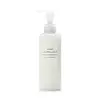What's inside
What's inside
 Key Ingredients
Key Ingredients

 Benefits
Benefits

 Concerns
Concerns

 Ingredients Side-by-side
Ingredients Side-by-side

Water
Skin ConditioningOlea Europaea Fruit Oil
MaskingCarthamus Tinctorius Seed Oil
MaskingIsopentyldiol
HumectantGlycerin
HumectantGlyceryl Stearate
EmollientDecyl Glucoside
CleansingArachidyl Alcohol
Emollient1,2-Hexanediol
Skin ConditioningGlycine Soja Protein
EmulsifyingCynanchum Atratum Extract
Skin ConditioningLimnanthes Alba Seed Oil
Skin ConditioningCeramide NP
Skin ConditioningHydrolyzed Hyaluronic Acid
HumectantSodium Hyaluronate
HumectantPanthenol
Skin ConditioningTocopherol
AntioxidantAllantoin
Skin ConditioningArginine
MaskingEthylhexylglycerin
Skin ConditioningXanthan Gum
EmulsifyingAcrylates/C10-30 Alkyl Acrylate Crosspolymer
Emulsion StabilisingBis-Ethoxydiglycol Succinate
HumectantArachidyl Glucoside
EmulsifyingGlucose
HumectantHydroxyacetophenone
AntioxidantBetaine Salicylate
AntimicrobialCetearyl Alcohol
EmollientBehenyl Alcohol
EmollientCitric Acid
BufferingCitrus Aurantium Bergamia Fruit Oil
MaskingSalvia Sclarea Oil
MaskingWater, Olea Europaea Fruit Oil, Carthamus Tinctorius Seed Oil, Isopentyldiol, Glycerin, Glyceryl Stearate, Decyl Glucoside, Arachidyl Alcohol, 1,2-Hexanediol, Glycine Soja Protein, Cynanchum Atratum Extract, Limnanthes Alba Seed Oil, Ceramide NP, Hydrolyzed Hyaluronic Acid, Sodium Hyaluronate, Panthenol, Tocopherol, Allantoin, Arginine, Ethylhexylglycerin, Xanthan Gum, Acrylates/C10-30 Alkyl Acrylate Crosspolymer, Bis-Ethoxydiglycol Succinate, Arachidyl Glucoside, Glucose, Hydroxyacetophenone, Betaine Salicylate, Cetearyl Alcohol, Behenyl Alcohol, Citric Acid, Citrus Aurantium Bergamia Fruit Oil, Salvia Sclarea Oil
Water
Skin ConditioningGlycerin
HumectantPEG-7 Glyceryl Cocoate
EmulsifyingHydrogenated Polyisobutene
EmollientCetyl Ethylhexanoate
EmollientPentylene Glycol
Skin ConditioningPropanediol
SolventOlea Europaea Fruit Oil
MaskingIsononyl Isononanoate
EmollientPolyquaternium-51
Skin ConditioningPrunus Armeniaca Juice
MoisturisingPrunus Persica Leaf Extract
EmollientSodium Hyaluronate
HumectantButylene Glycol
HumectantSqualane
EmollientGlyceryl Behenate/Eicosadioate
EmollientPolysorbate 60
EmulsifyingHydroxyethyl Acrylate/Sodium Acryloyldimethyl Taurate Copolymer
Emulsion StabilisingCarbomer
Emulsion StabilisingTocopherol
AntioxidantPotassium Hydroxide
BufferingEthylhexylglycerin
Skin ConditioningPhenoxyethanol
PreservativeCitrus Aurantium Dulcis Peel Oil
MaskingWater, Glycerin, PEG-7 Glyceryl Cocoate, Hydrogenated Polyisobutene, Cetyl Ethylhexanoate, Pentylene Glycol, Propanediol, Olea Europaea Fruit Oil, Isononyl Isononanoate, Polyquaternium-51, Prunus Armeniaca Juice, Prunus Persica Leaf Extract, Sodium Hyaluronate, Butylene Glycol, Squalane, Glyceryl Behenate/Eicosadioate, Polysorbate 60, Hydroxyethyl Acrylate/Sodium Acryloyldimethyl Taurate Copolymer, Carbomer, Tocopherol, Potassium Hydroxide, Ethylhexylglycerin, Phenoxyethanol, Citrus Aurantium Dulcis Peel Oil
 Reviews
Reviews

Ingredients Explained
These ingredients are found in both products.
Ingredients higher up in an ingredient list are typically present in a larger amount.
Ethylhexylglycerin (we can't pronounce this either) is commonly used as a preservative and skin softener. It is derived from glyceryl.
You might see Ethylhexylglycerin often paired with other preservatives such as phenoxyethanol. Ethylhexylglycerin has been found to increase the effectiveness of these other preservatives.
Glycerin is already naturally found in your skin. It helps moisturize and protect your skin.
A study from 2016 found glycerin to be more effective as a humectant than AHAs and hyaluronic acid.
As a humectant, it helps the skin stay hydrated by pulling moisture to your skin. The low molecular weight of glycerin allows it to pull moisture into the deeper layers of your skin.
Hydrated skin improves your skin barrier; Your skin barrier helps protect against irritants and bacteria.
Glycerin has also been found to have antimicrobial and antiviral properties. Due to these properties, glycerin is often used in wound and burn treatments.
In cosmetics, glycerin is usually derived from plants such as soybean or palm. However, it can also be sourced from animals, such as tallow or animal fat.
This ingredient is organic, colorless, odorless, and non-toxic.
Glycerin is the name for this ingredient in American English. British English uses Glycerol/Glycerine.
Learn more about GlycerinOlea Europaea Fruit Oil is the fixed oil obtained from the ripe fruit of the Olive. In other words - olive oil.
The primary contents of olive oil are glycerides of the fatty acids linoleic, oleic and palmitic.
Olive oil also contains antioxidants such as Vitamin E. Antioxidants may help reduce signs of aging by fighting unstable free-radical molecules. It also contains Vitamins A (retinol), D, and K.
The squalene in olive oil makes it a great emollient. Emollients help soothe and soften your skin by trapping moisture in. This makes olive oil a great skin moisturizer.
Studies show olive oil to have antibacterial and antifungal properties in low concentrations. Another study found olive oil irritated sensitive oily skin. We always recommend speaking with a professional about using this ingredient in your routine.
Due to the fatty acid content, this ingredient may not be fungal-acne safe.
Learn more about Olea Europaea Fruit OilSodium Hyaluronate is hyaluronic acid's salt form. It is commonly derived from the sodium salt of hyaluronic acid.
Like hyaluronic acid, it is great at holding water and acts as a humectant. This makes it a great skin hydrating ingredient.
Sodium Hyaluronate is naturally occurring in our bodies and is mostly found in eye fluid and joints.
These are some other common types of Hyaluronic Acid:
Learn more about Sodium HyaluronateTocopherol (also known as Vitamin E) is a common antioxidant used to help protect the skin from free-radicals and strengthen the skin barrier. It's also fat soluble - this means our skin is great at absorbing it.
Vitamin E also helps keep your natural skin lipids healthy. Your lipid skin barrier naturally consists of lipids, ceramides, and fatty acids. Vitamin E offers extra protection for your skin’s lipid barrier, keeping your skin healthy and nourished.
Another benefit is a bit of UV protection. Vitamin E helps reduce the damage caused by UVB rays. (It should not replace your sunscreen). Combining it with Vitamin C can decrease sunburned cells and hyperpigmentation after UV exposure.
You might have noticed Vitamin E + C often paired together. This is because it is great at stabilizing Vitamin C. Using the two together helps increase the effectiveness of both ingredients.
There are often claims that Vitamin E can reduce/prevent scarring, but these claims haven't been confirmed by scientific research.
Learn more about TocopherolWater. It's the most common cosmetic ingredient of all. You'll usually see it at the top of ingredient lists, meaning that it makes up the largest part of the product.
So why is it so popular? Water most often acts as a solvent - this means that it helps dissolve other ingredients into the formulation.
You'll also recognize water as that liquid we all need to stay alive. If you see this, drink a glass of water. Stay hydrated!
Learn more about Water